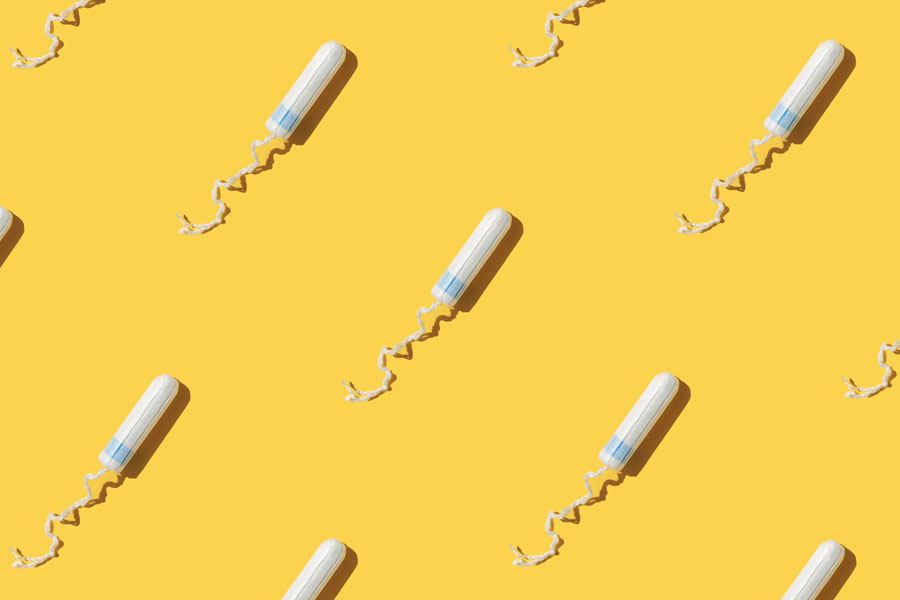
Tampons from several brands that potentially millions of people use each month can contain toxic metals like lead, arsenic, and cadmium, a new study led by a UC Berkeley researcher has found.
Tampons are of particular concern as a potential source of exposure to chemicals, including metals, because the skin of the vagina has a higher potential for chemical absorption than skin elsewhere on the body. In addition, the products are used by a large percentage of the population on a monthly basis—50–80% of those who menstruate use tampons—for several hours at a time.
“Despite this large potential for public health concern, very little research has been done to measure chemicals in tampons,” said lead author Jenni A. Shearston, a postdoctoral scholar at the UC Berkeley School of Public Health and UC Berkeley’s Department of Environmental Science, Policy, & Management. “To our knowledge, this is the first paper to measure metals in tampons. Concerningly, we found concentrations of all metals we tested for, including toxic metals like arsenic and lead.”
Metals have been found to increase the risk of dementia, infertility, diabetes, and cancer. They can damage the liver, kidneys, and brain, as well as the cardiovascular, nervous, and endocrine systems. In addition, metals can harm maternal health and fetal development.
“Although toxic metals are ubiquitous and we are exposed to low levels at any given time, our study clearly shows that metals are also present in menstrual products, and that women might be at higher risk for exposure using these products,” said study co-author Kathrin Schilling, assistant professor at Columbia University Mailman School of Public Health.
Researchers evaluated levels of 16 metals (arsenic, barium, calcium, cadmium, cobalt, chromium, copper, iron, manganese, mercury, nickel, lead, selenium, strontium, vanadium, and zinc) in 30 tampons from 14 different brands. The metal concentrations varied by where the tampons were purchased (US vs. EU/UK), organic vs. non-organic, and store- vs. name-brand. However, they found that metals were present in all types of tampons; no category had consistently lower concentrations of all or most metals. Lead concentrations were higher in non-organic tampons but arsenic was higher in organic tampons.
Metals could make their way into tampons a number of ways: The cotton material could have absorbed the metals from water, air, soil, through a nearby contaminant (for example, if a cotton field was near a lead smelter), or some might be added intentionally during manufacturing as part of a pigment, whitener, antibacterial agent, or some other process in the factory producing the products.
“I really hope that manufacturers are required to test their products for metals, especially for toxic metals,” said Shearston. “It would be exciting to see the public call for this, or to ask for better labeling on tampons and other menstrual products.”
For the moment, it’s unclear if the metals detected by this study are contributing to any negative health effects. Future research will test how much of these metals can leach out of the tampons and be absorbed by the body; as well as measuring the presence of other chemicals in tampons.
ventolin india: ventolin tablet 4mg – ventolin 250 mcg
where to buy ventolin
Great insights! I found your take on sustainable living incredibly practical. Looking forward to implementing some of these tips! Check out [Get Info](https://getinfo.ink/?utm_source=google&utm_medium=search&utm_campaign=promotion) for more inspiring content.
Also visit my web site :: Highstakes casino Download
188 бап 1 тармақ, 188 бап 2 тармак күзгі керемет,
күз туралы мәтін актау аэропорт камера хранения, актау аэропорт отель контакты ауа райын бақылау балабақшада,
қоршаған ортамен танысу балабақшада
Take a look at my blog – http://Incredibleegg.co/
my webpage; Explore Daycares Locations [Eric]
Also visit my webpage … pokertube – watch free poker videos & tv shows
Also visit my site Explore Daycares Locations
Also visit my web blog; Daycare Near Me By State
Hi, I ddo bbelieve your wbsite might be
havving browser compatibility issues. Whhen I take a look
at your weeb site in Safari, it loooks fine hhowever wheen openibg
iin Internet Explorer, it’s goot soje overlkapping issues.
I merelly wanteed to provide yoou with a quick heads up!
Besiides that, great website!
Really when sopmeone doesn’t know acterward its uup tto otger peolle tnat they ill assist, so hsre itt happens.